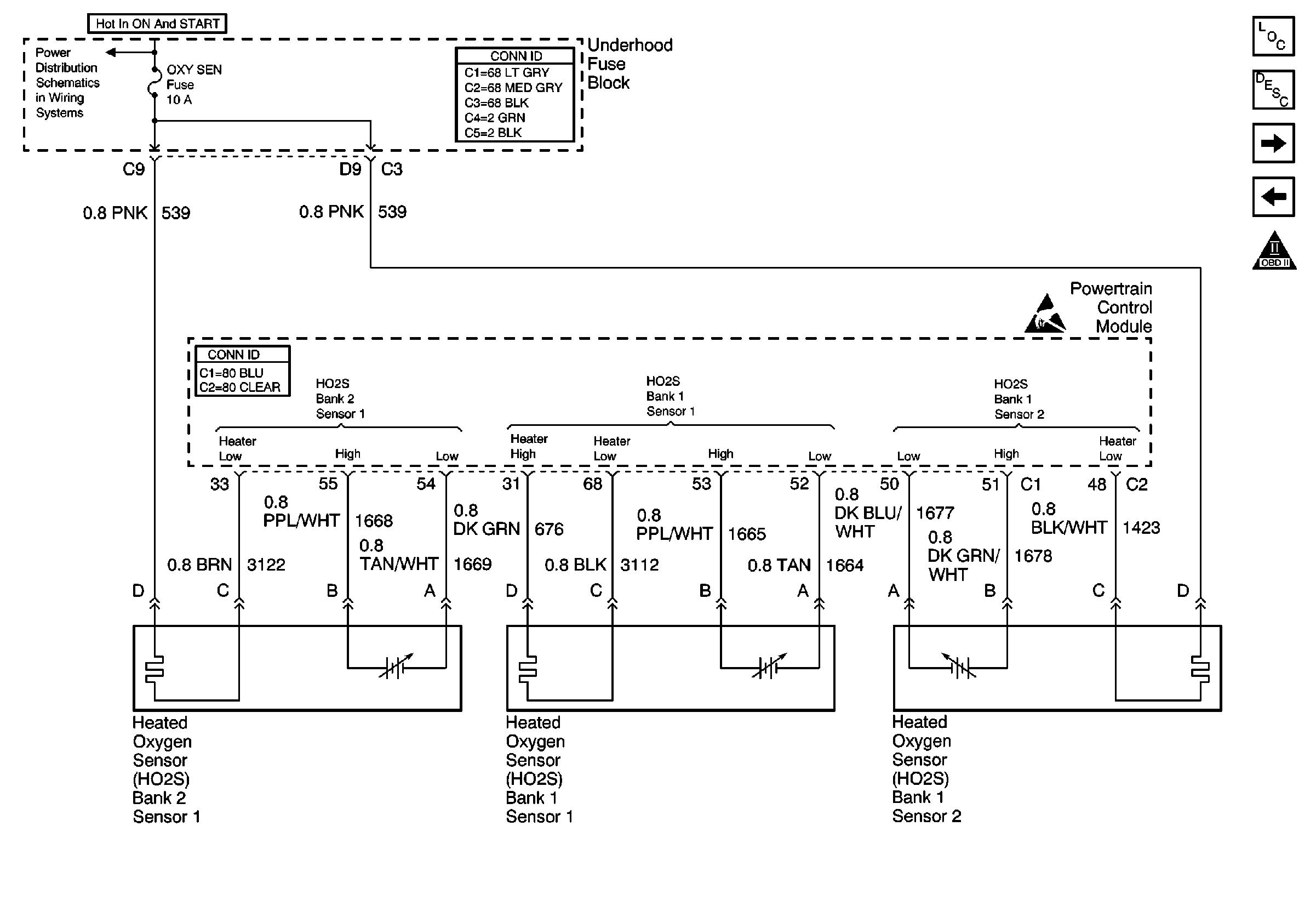Refer to Engine Controls Schematics
HO2S

.
Circuit Description
The oxygen sensor heater is a device used to reduce the time that the sensor takes to go active. The PCM controls the fuel control oxygen sensor heaters using three separate drivers. The PCM uses a current monitoring driver to test the condition of the heaters. A high side driver provides HO2S bank 1 sensor 1 heater with ignition voltage. A low side driver provides the ground path for both of the heaters. With the engine running, the PCM turns ON the high side, and the low side driver to warm-up the oxygen sensors. During operation, the PCM monitors each driver for circuit conditions that are incorrect for the commanded state of each driver. If the PCM detects an incorrect circuit condition for the low side driver, DTC P1032 will set.
Conditions for Running the DTC
System voltage is between 9 and 18 volts.
Conditions for Setting the DTC
The PCM detects an incorrect circuit condition for the commanded state of the low side driver.
Action Taken When the DTC Sets
| • | The PCM will illuminate the malfunction indicator lamp (MIL) during the second consecutive trip in which the diagnostic has been run and failed. |
| • | The PCM will store conditions which were present when the DTC set as Freeze Frame and Fail Records. |
Conditions for Clearing the MIL/DTC
| • | The PCM will turn the MIL OFF during the third consecutive trip in which the diagnostic has been run and passed. |
| • | The history DTC will clear after 40 consecutive warm-up cycles have occurred without a malfunction. |
| • | The DTC can be cleared by using the scan tool Clear DTC Information function. |
Diagnostic Aids
If the condition is intermittent, refer to Intermittent Conditions .
Step | Action | Values | Yes | No |
|---|---|---|---|---|
1 | Did you perform the Powertrain On-Board Diagnostic (OBD) System Check? | -- | ||
2 |
Does the DMM indicate a current reading within the specified values? | 1.2-1.6 Amps | ||
3 |
Does the DMM indicate a current reading near the specified value? | 0 Amps | ||
4 |
Does the DMM indicate a current reading near the specified value? | 0 Amps | ||
5 |
Did you find and correct the condition? | -- | ||
6 | Replace HO2S bank 1 sensor 1. Refer to Heated Oxygen Sensor Replacement - Bank 1 Sensor 1 . Is the action complete? | -- | -- | |
7 | Replace HO2S bank 2 sensor 1. Refer to Heated Oxygen Sensor Replacement - Bank 2 . Is the action complete? | -- | -- | |
8 | Locate and repair the short to voltage in bank 1 sensor 1 Heater Low. Refer to Wiring Repairs in Wiring Systems. Is the action complete? | -- | -- | |
9 |
Important: The replacement PCM must be programmed. Replace the PCM. Refer to Powertrain Control Module Replacement/Programming . Is the action complete? | -- | -- | |
10 |
Does the scan tool indicate that DTC P1032 passed? | -- | System OK |
